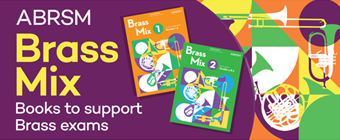
Sir Edward Elgar may appear to be the quintessential English composer; yet appearances can be deceptive.
Behind the Baronetcy and flag waving sounds of Edwardian imperialism hid a man of complex insecurities - a self confessed ‘outsider’ of humble lineage who yearned social acceptance but whose musical influences lay far from the bucolic Malvern Hills and its class conscious High Church structures.
Universal recognition
His friend August Jaeger told him that “universal recognition will come” (as it did for both with ‘Enigma Variations’) yet for much of his life it was almost as if the real Elgar was hidden behind his imposing walrus moustache.
His creative peak came in middle age - bestowed almost after his Roman Catholicism no longer grated with the establishment and marriage had given him the status he so craved. Yet he died an atheist, his attitude to women a troubling stain on a life that now seems a construct of deliberate enigmas in more ways than one.
Today his musical reputation is sealed by the popularity his most famous works, yet its substance has been questioned. Richard Strauss noted early Elgar as a progressive, yet Herbert Von Karajan called ‘Enigma’, “second-hand Brahms”.
His creative peak came in middle age - bestowed almost after his Roman Catholicism no longer grated with the establishment and marriage had given him the status he so craved. Yet he died an atheist, his attitude to women a troubling stain on a life that now seems a construct of deliberate enigmas in more ways than one.
Interestingly then, there was no ‘Severn Suite’ on the trio of ‘Heritage Series’ releases produced by Polyphonic between 1984 and 1986.
Enigma
Why the 1930 National Championship test-piece wasn’t included is an enigma in itself – although Bram Gay’s influence as the Music Co-ordinator on the first two (recorded together in June 1984), but not the third (December 1985) cannot be ignored (he was rather dismissive of the brass band ‘original’ and was to championed his own transcription soon after).
It was therefore to be an opportunity lost - compounded by Howard Snell’s wonderfully structured ‘Enigma’ interpretation (with Desford - the finale combined with Foden) of the somewhat colourless Eric Ball arrangement on Vol. 1.
It would have been fascinating to hear what he could have achieved with both scores, as by the time of these recordings he had already pioneered a new era of texture and timbre.
It was therefore to be an opportunity lost - compounded by Howard Snell’s wonderfully structured ‘Enigma’ interpretation (with Desford - the finale combined with Foden) of the somewhat colourless Eric Ball arrangement on Vol. 1.
His inventive colour palette had begun seeping through with his remarkable arrangements for Granada Band of the Year and Brass in Concert – crowned by his glorious approach to ‘Daphnis and Chloe’ used to claim the European title with Desford in 1986.
That feeling is only further enhanced by his lucid yet respectful approach to each work throughout the three releases.
Exemplary
The playing is exemplary, even if the arrangements from the likes of Denis Wright, Eric Ball and Arthur Butterworth on Vol.2 also seem rather bland in texture to the modern ear (the exception being the Glyn Bragg arrangement of the ‘Triumphal March’ from ‘Caractacus’ which has a wind band feel).
Vol 3. (Foden alone) brought the series to a close with a tantalising glimpse of Snell’s ability to remove the decades of encrusted dust to reveal lost authentic Elgarian colours.
That said there is a delicacy to the ‘Two Interludes’ from ‘Falstaff’ and a chivalrous bravura to ‘Froissart Overture’ on the first LP, as well as a light playfulness to Bram Gay’s pick and mix from ‘The Wand of Youth’ (Snell’s ‘Four Pieces’ from the ‘First Suite’ on Vol. 3 are much more coherent).
In addition, Robert Childs is at the peak of his expressive powers as the soloist in the ‘Adagio’ and ‘Allegro Molto’ from the iconic ‘Cello Concerto’ (Vol. 2).
Tantalising glimpse
Vol 3. (Foden alone) brought the series to a close with a tantalising glimpse of Snell’s ability to remove the decades of encrusted dust to reveal lost authentic Elgarian colours.
It is shown in miniature on ‘Salut d’Amour’ with its delicate warmth and charm whilst there is a perfectly agreeable ‘piacevole’ lilt to Philip Sparke’s arrangement of ‘Serenade Op. 20’.
Even the five ‘Pomp & Circumstance’ marches get the most ardent of modern day republicans ready to belt out a chorus or two of quintessential banner waving Britishness.
Iwan Fox
Volume 1: (Polyphonic EHS 001D)
Desford Colliery Dowty & Foden OTS Band
Conductor: Howard Snell
Side 1:
1. Enigma Variations (arr. Ball)
Desford Colliery Band
Side 2:
1. Enigma Variations (Finale)
Desford and Foden
2. Two Interludes from ‘Falstaff’ (arr. Wiggins)
Foden
3. Froissart Overture (arr. Ball)
Foden
Volume 2: (Polyphonic EHS 002D)
Desford Colliery Dowty & Foden OTS Band
Conductor: Howard Snell
Guest Soloist: Robert Childs
Side1:
1. Suite from The Wand of Youth (arr. Gay)
Foden
2. Chanson de Matin (arr. Denis Wright)
Desford
3. Adagio and Allegro Molto from Cello Concerto (arr. Bourgeois)
Soloist: Robert Childs
Foden
Side 2:
1. Prelude to ‘The Dream of Gerontius’ (arr. Ball)
Desford
2. Imperial March (arr. Ball)
Foden
3. Canto Popolare (from ‘In the South’) (arr. Butterworth)
Foden
4. Triumphal March from Caractacus (arr. Bragg)
Desford and Foden
Volume 3: (Polyphonic EHS 003D)
Foden OTS Band
Conductor: Howard Snell
Side 1:
1. Four Pieces from ‘Wand of Youth’ (arr. Snell)
2. Salut d’Amour (arr. Snell)
3. Serenade Op.20 (Sparke)
Side 2:
1. Pomp & Circumstance Marches
No. 1 in D major (arr. Sparke)
No. 2 in A major (arr. Snell)
No. 3 in C minor (arr. Sparke)
No. 4 in G major (arr. Gay)
No. 5 in C major (arr. Snell)









